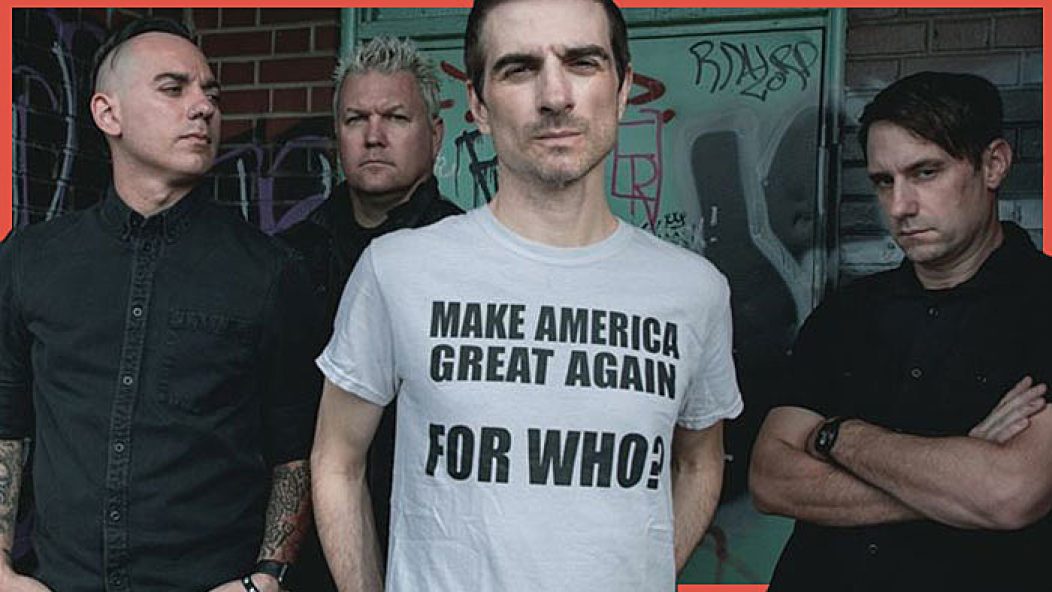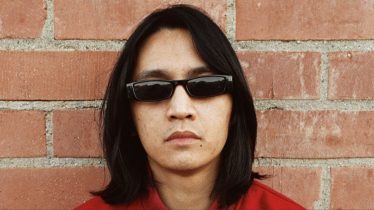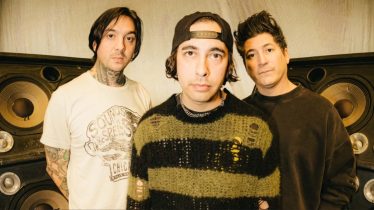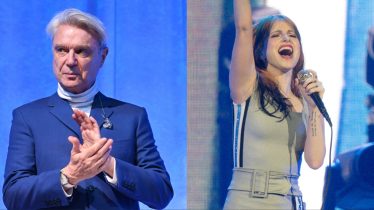
There’s one ’70s punk-rock icon that Anti-Flag all agree is a badass
High-powered punks Anti-Flag recently celebrated the release of their documentary, Beyond Barricades: The Story Of Anti-Flag. Over the course of nearly three decades, the Pittsburgh-based punks have opened ears, eyes and hearts across the world with their political consciousness. While their tenure in the punk scene is certainly noteworthy, we asked them to weigh in on the punk-rock icons before them.
Editor In Chief Paige Owens asked the members of Anti-Flag to run down some of the punk icons they felt should be included in some kind of Mount Rushmore monument. As with most conversations with Anti-Flag, you tend to find out something new. In this case, we got a microlesson in both history and its role in these modern times. Fortunately, it didn’t mar the intention of the interview, which was to show respect to the artists who cleared punk’s path with their own six-stringed machetes. Check out the video or read the interview below to find out who Justin Sane thinks is “the coolest person in the world” and the person they unilaterally describe as “a badass.”
Read more: Anti-Flag are taking you beyond barricades in new documentary
JUSTIN SANE: It’s really important for us when we talk about Mount Rushmore at all to back up a little bit and think about the idea that America has invaded, and these invaders killed almost all of us. And then after they do that, they push us on to the most uninhabitable land that still exists on the continent. And then to add insult to injury, they carved the faces of the leaders of their empire, and their colonists, into the Washington Monument or into the Statue Of Liberty. That’s what Mount Rushmore is.
Mount Rushmore was sacred ground to the Lakota Sioux Nation. And it’s a racist monument. The architect was a white supremacist and someone who was very invested in furthering the cause of white supremacy. So it’s important that we just mention that. I’m personally like, “Blow those faces the fuck off that mountain and give it back to the Lakota Sioux.” It’s theirs. So that’s an important point for us to make.
Now, that said, I get that AP is just trying to have some fun here. And I think it is really a cool idea to think about who would be our four punk-rock icons that we’d chisel into the face of CBGB or Mount Rushmore, for example.
Read more: Anti-Flag celebrate ’20/20 Vision’ release with full in-studio performance
CHRIS #2: We could just instead of carving into Mount Rushmore, we could just carve into the Trump Towers.
PAT THETIC: You are saying that there are punk icons that need to be revered. I would say that is the antithesis of punk rock to start with. Because the whole goal of punk rock is to tear down the idols and say, “What you’ve created is bullshit, and we’re gonna create something that’s more real than that.” So the initial premise of what should be the icons of punk rock. I even have a question with that, as well.
CHRIS #2: Perhaps there’s a thing where we point out the worst people in punk. You go spit on them or piss on them or do other things. Right below the Johnny Lydon statue you shit on. But I can’t wait to hear the question…
Well, for the first one, we’re going to talk about 1970s punk rock. If Anti-Flag were to name four individuals who should be immortalized from 1970s punk rock, who would they be and why?
PAT THETIC: For individuals in 1970s punk rock, I will say Mark Laff, the drummer of Generation X.
CHRIS #2: Drummer picks a drummer. You know, he’s the drummer because he’s sitting in a room with a drum kit.
PAT THETIC: I’ve got my hatchet back there, as well.
Read more: Anti-Flag condemn President Donald Trump on new album ’20/20 Vision’
JUSTIN SANE: Well done, Pat. I absolutely love the drumming by Mark Laff. I think it’s so creative, especially at a time when rock music drumming was dumbed down. And that’s a cool thing when you think about punk drumming. Like Dave Grohl took drumming from being a snare drum and a kick drum and mainstream music and just turned it on its fucking head. And punk drumming has been doing that for a long time.
CHRIS #2: Justin: Flip a coin as to which one of us is gonna pick Joe Strummer, or do you just want to put him up there…
JUSTIN SANE: I’ll just put Joe Strummer up there. I’ll just put all the Clash up there and be done. Joe Strummer, definitely. For me, when I think about the ’70s punk scene, it really began in New York with the CBGB scene. Joe Strummer was influenced by the Ramones, so the Sex Pistols were influenced by the Ramones. So when you think about it in that respect, you know, the people in that scene, of course, Joey Ramone.
Read more: “The case of Michael Brown is not the exception, it is the rule”– Anti-Flag’s Justin Sane on Ferguson
If I wanted to hold somebody up with a punk-rock attitude, he always wanted to be a singer in a band. He loved singing and playing music. And he was in a band before the Ramones, and they weren’t a punk band. They were just a rock band. The other members of the band kicked him out because he wasn’t cool enough to be in their band. I just love that Joey Ramone was like, “Fuck you, I’m gonna be the singer in a band.” He never quit. He never gave up. He believed in himself. And he was like, “I’m gonna do it my way. I am not going to listen to what they told me I am. I’m going to be who I am and do it my way.”
The cool thing about music is I think so many performers are really most comfortable when they’re onstage. And Joey Ramone was such an incredible example of that. Because here’s a person who really wasn’t comfortable in his own skin. He was obsessive-compulsive. He had a lot of emotional issues. But when he got onstage, he just transformed into this other character, this other person where a lot of people said that’s where he was most comfortable. I was lucky enough to see the Ramones a good few times. I remember just watching him onstage, like just thinking, “This guy’s the coolest fucking person I’ve ever seen in my life.” So just considering the amount of influence he had on all the people that came after him, he is a big one for me.
Read more: Here are 10 times ‘SNL’ brought punk into America’s living rooms
PAT THETIC: So why do we put the four of the Clash then? You going to put more out there, Johnny Ramone? How does this work?
CHRIS #2: You’ve got to go with Siouxsie Sioux, or you’ve got to go with Debbie Harry.
JUSTIN SANE: Patti Smith to round it out. Just to talk about Patti Smith for a minute: Patti Smith was part of that CBGB scene. She’s somebody who had such a profound impact on all the people like Kathleen Hanna and all the people [who] came after her. She was just such a true artist. Her books are incredible. Her live performances will still blow your fucking mind. She’s just really like a true artist. She was just somebody who was like, “Look, this is who I am. This is what I’m creating. And you can take it or leave it. I don’t care. I’m doing it for me.” And that I think that adds to that whole punk mystique.
CHRIS #2: Yeah. So just to like actually answer the question. [Laughter.] Generation X are from L.A., correct?
PAT THETIC: No, Generation X are from the U.K.
CHRIS #2: OK, good. Because I don’t want to have anybody from L.A. on our thing. [Laughter.] She was from L.A., so we should get rid of her in lieu of…
JUSTIN SANE: Siouxsie Sioux is English too, as well.
CHRIS #2: OK, good, good, good. Let’s go. [Laughter.] So we’ve got Joey Ramone.
PAT THETIC: He was from New York. [Laughter.]
Read more: Billie Joe Armstrong, Joan Jett and more honor fashion icon Jimmy Webb
CHRIS #2: We got Mark from Generation X. He’s allowed on. Patti Smith I think wins in my mind over Joan Jett or Debbie Harry. But I think…
PAT THETIC: Joan Jett? That’s a tough call. Joan Jett is a badass.
JUSTIN SANE: Yeah, she’s still a badass. She’s so cool.
CHRIS #2: Joan Jett and Siouxsie Sioux and Patti Smith and have it be mostly New Yorkers and one English person and move the fuck out of the ’70s.
I love that I get to learn stuff from you guys. It’s an open, honest conversation where you can come in not being the most knowledgeable person in the room and not be talked down to or looked at in a way that you’re not as good as someone of your level who understands the depth of not only punk rock but what’s going on in our political system.
CHRIS #2: I don’t know where any of these fucking people live. [Laughter.]
Have Anti-Flag ever met any of the punk-rock icons from the 1970s who you’ve named?
CHRIS #2: Joan Jett. We spent a lot of time with Joan Jett, and she was by far the coolest.
PAT THETIC: That moved her up on my scale, for sure, because as a human being, she’s pretty badass.
CHRIS #2: Not only did we meet her and have great experiences with her, [but] we had a large gap in between seeing her and then ran into each other, and she knew who we were and was excited to see us. And me, I wake up, and I don’t know who I am. How the fuck does Joan Jett [know]? So that was really cool. I’ve never met Patti Smith, but I would love to. But again, you know, I also would be OK with her not knowing who we were forever. [Laughs.]
You can check out the Anti-Flag documentary, Beyond Barricades, via video on demand Oct. 16 and on DVD Nov. 6.







